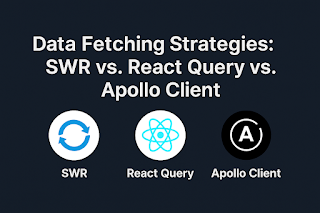The Future of No-Code & Low-Code Platforms in Front-End Development
In the fast-paced world of web development, speed and agility are everything. As businesses demand faster digital solutions, No-Code and Low-Code platforms have stepped into the spotlight—redefining how front-end applications are built.
But are they just a passing trend or a revolutionary shift?
What Are No-Code and Low-Code Platforms?
No-Code Platforms: Enable users to build web applications using visual drag-and-drop interfaces without writing any code.
Low-Code Platforms: Offer a mix—visual development with the option to add code for customization and flexibility.
Popular platforms include Webflow, Bubble, OutSystems, and Retool.
Why Are They Gaining Traction?
Faster Time to Market Build MVPs or full-scale apps in days instead of months.
Empowerment Beyond Developers Designers, marketers, and product managers can contribute to development without relying solely on engineers.
Cost Efficiency Reduce engineering workload and expenses on initial builds.
Great for Prototyping Quickly test ideas before investing in full-fledged engineering.
Use Cases in Front-End Development
Marketing Sites & Landing Pages Tools like Webflow let teams build and publish dynamic, responsive sites without dev help.
Internal Tools & Dashboards Low-code platforms like Retool simplify creating admin panels and analytics tools.
Customer Portals & Forms Automate user interactions and data capture with minimal setup.
Limitations and Challenges
Customization Limitations Complex animations or interactions may require hand-coded components.
Scalability Enterprise-grade apps still demand traditional coding practices for performance and security.
Vendor Lock-In Moving away from a platform later can be difficult or costly.
The Developer's Role Isn't Going Anywhere
No/Low-code platforms augment, not replace, developers. They’re tools to accelerate development—not a one-size-fits-all solution.
In complex apps, developers still lead architecture, performance tuning, integrations, and security.
What’s Next?
The future will likely include:
Hybrid Models Seamlessly combine visual tools and code (e.g., Webflow + custom components)
AI-Assisted No-Code Builders Tools that generate apps based on prompts
Greater Enterprise Adoption For internal tooling and rapid prototyping
Final Thoughts
No-code and low-code platforms are changing how front-end apps are conceived and delivered. They democratize development, boost agility, and are ideal for rapid iterations—especially in startups and product teams. While they won’t replace traditional development, they’re becoming an essential part of the modern front-end developer’s toolkit.
#NoCode #LowCode #FrontendDevelopment #WebDevelopment #Webflow #Bubble #Retool #DeveloperTools #UXDesign #BuildInPublic #FutureOfTech #TechTrends




Comments
Post a Comment